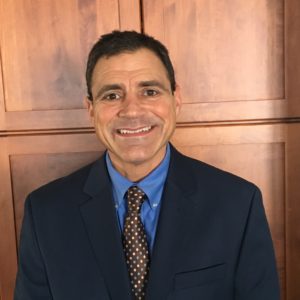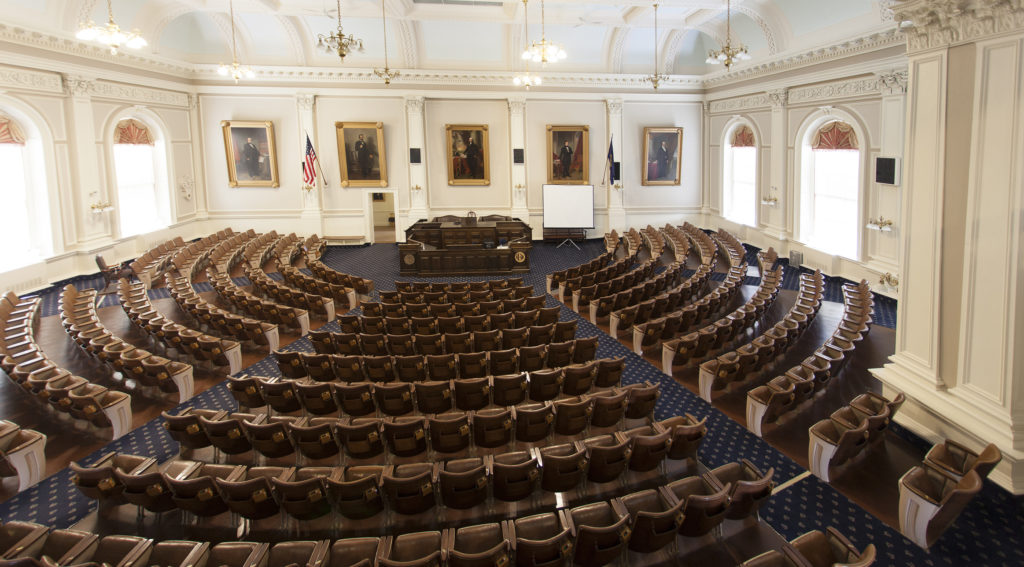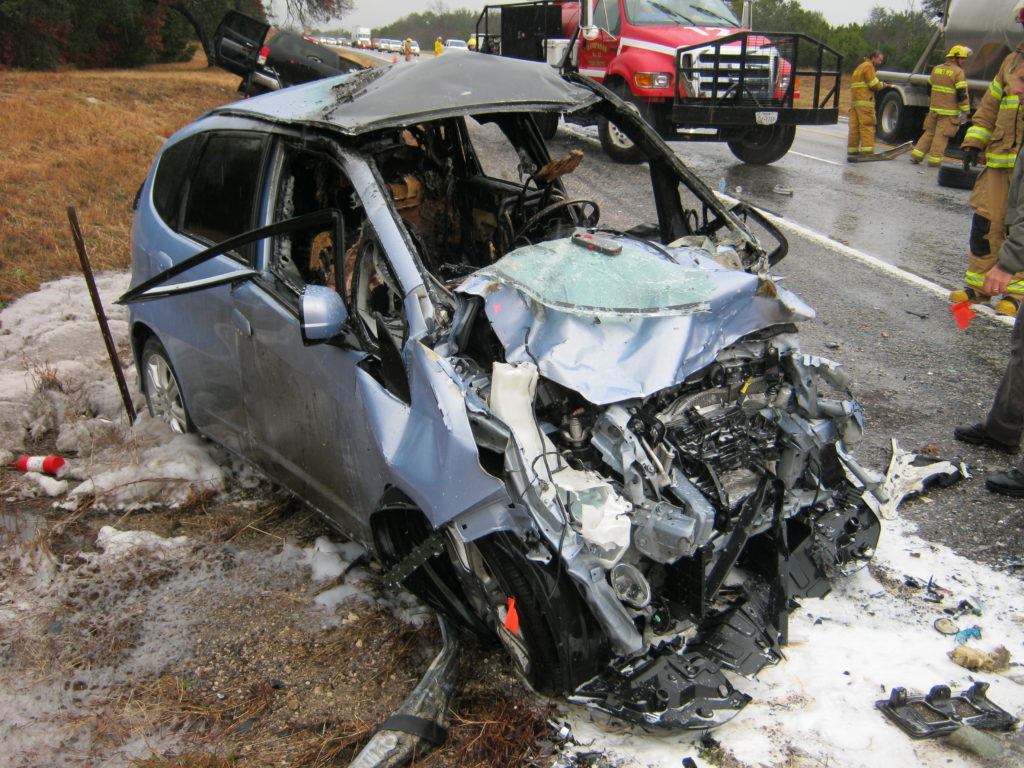
AASP, ASA, SCRS respond to N.H. insurance commissioner’s op-ed
By onAnnouncements | Associations | Business Practices | Insurance | Legal | Repair Operations
The three national collision repair trade groups have submitted a counterpoint to New Hampshire Insurance Commissioner John Elias’ recent op-ed in favor of an OEM repair procedure bill veto.
Elias’ commentary on House Bill 664 appeared Aug. 30 on the website of the New Hampshire Union-Leader, which describes itself as New Hampshire’s only statewide newspaper.
Elias, an appointee of Republican Gov. Chris Sununu, had initially issued a neutral statement accompanying Sununu’s Aug. 15 veto of HB 664.
“The New Hampshire Insurance Department knows that the intentions behind this bill were good,” Elias said then. “All of the parties worked very hard to come to an agreement. The Department feels that the same parties, with sufficient time in the future, will be able to work together to ensure that the bill can be designed to fulfill the important interest of industry and consumers in a way that is consistent with the original intent of the sponsors.”
But in the Aug. 30 Union-Leader op-ed, he came out in favor of the veto and strongly against the bill — insinuating it would have “hijacked” a consumer protection law on behalf of collision repairers.
“No insurance company, agent, or adjuster shall knowingly fail to pay a claim to the claimant or repairer to the extent the claimant’s vehicle is repaired in conformance with applicable manufacturer’s procedures,” HB 664 states. “Notwithstanding any statements or recommendations contained in the manufacturer’s procedures relative to the use of parts, governance of the use of any and all parts, in the course of an insurer-funded repair shall be solely dictated by RSA 407-D:3-a and not by a manufacturer’s recommendations or procedures.”
The bill also would have forced insurers to “reimburse the repairer based on any third-party guidelines generally accepted by automobile repair shops and insurers, and used by the repairer.”
Representatives approved House Bill 664 on March 19 in a 202-105 vote. A retooled version cleared the Senate with merely a voice vote June 6 and was adopted in a House voice vote later that month.
The New Hampshire General Court can override Sununu’s veto with a two-thirds vote in each chamber, and lawmakers were to take up all vetoed legislation this month. Elias wrote Aug. 30 he hoped they wouldn’t.
“It is clear that this language would increase insurance payments to auto body repair shops, but it is not at all clear that insurance consumers would be well served by this bill,” Sununu wrote in the Union-Leader.
“… Chapter 417 is a consumer protection law and should not be hijacked to serve other interests. If there is a consumer protection issue to be addressed regarding manufacturer’s procedures, then certainly there is nothing wrong if an indirect benefit accrues to an involved business sector. However, the profit level of a particular business sector is not now and should never be a goal of the law.”
Elias, whose resume includes 13 years working at insurers Safe Auto and the Westfield Group, raised the usual insurance industry and even insurance commissioner specter of higher premiums.
“The most predictable effect of this bill is that personal auto policyholders in New Hampshire will experience a rate increase because of increased claims costs,” Elias wrote. “However, the amount of this increase is difficult to estimate because New Hampshire would be the first state to pass this legislation. Although New Hampshire enjoys the ninth lowest average premium in the country, we have the fourth highest percentage of premium attributed to collision coverage. This is an indication that the cost of repairs is already a concern in this state, and any move to further increase such costs would have to be well justified.”
The Sept. 5 reply by the Society of Collision Repair Specialists, Automotive Service Association and Alliance of Automotive Service Providers pointed out the logical fallacy here.
“Commissioner Elias also asserted that requiring auto body shops to follow manufacturer instructions would increase insurance rates on consumers,” the document by AASP President Bill Adams, SCRS Chairman Brett Bailey and ASA President Ray Fisher states. “Such a belief is an acknowledgement that repairs are not being conducted in accordance with automaker instructions today. If they were, there would be no reason for rates to change. The very reason consumers buy auto insurance is to make sure their vehicle is made whole if they are ever in an accident. We are aware of no insurance discounts offered in the state for policies that allow for corner-cutting repairs. As such, New Hampshire consumers should be guaranteed their vehicle will receive a safe and proper repair if their vehicle is ever in an accident, and to do so repairers need to follow automaker repair procedures every time.”
Elias also brought up the spectre of OEM repair procedures demanding OEM parts, despite the bill clearly carving out an exemption honoring the aftermarket parts law RSA 407-D:3-a. He called that exemption honoring in the bill “extremely vague and unclear” in a similarly “vague and unclear” argument:
What would the use of “manufacturer’s procedures” amount to in practice? Well, a common requirement is that only the original manufacturer’s parts be used. The problem with this is that New Hampshire already has an “after-market parts” law, Chapter 407-D, that allows insurers to require the use of after-market parts for older cars if the parts are of “like kind and quality.” This is a model law that exists in many states and is designed, in part, to limit the cost of auto insurance to consumers consistent with safety. HB 664 attempts to deal with this by exempting “any and all parts” that may be recommended by manufacturer’s procedures. Similarly, “tooling and equipment” recommended by manufacturer’s procedures are also sometimes exempted. The result is that the bill is extremely vague and unclear as to what it requires.
This also seems to overlook that Elias’ office just last year warned insurers about improper behavior related to the aftermarket parts law in a May 3, 2018 bulletin. Bulletin 18-020-AB even mentions insurers agreeing that a part they selected “is not of like kind and quality” but refusing to pay for the cost of using a compliant part. Elias wouldn’t become commissioner until June 13, 2018, but he has worked for the agency since 2016.
Finally, Elias challenged the idea that the bill would lead to safer repairs.
“However, no proof of safety concerns was offered at any of the hearings on this bill,” he wrote. “The Insurance Department has reviewed over four years of consumer service data, and we did not find any complaints about the safety of a vehicle following a repair.”
Ironically, a fiscal note tied to the amended Senate version of HB 664 found Elias’ own agency believing shops would file complaints about insurer noncompliance with the bill. Shops have been allowed to file complaints with the DOI for about the past two years, according to a November 2018 report.
“The Insurance Department indicates this bill could lead to an increase in complaints to the Department’s Consumer Services Division from repair facilities questioning insurers adherence to the statute,” the fiscal note states. “The Department is unable to predict the volume of additional queries and complaints, but believes it could be large enough to require an additional staff position.”
Bailey, Fisher and Adams pointed out a logical fallacy here too, at one point referencing the $31.5 million Seebachan v. John Eagle Collision verdict (later settled for an undisclosed amount).
“Instead of recognizing the possibility that implied pressure and claims settlement practices from insurers could yield an unsafe vehicle repair, Commissioner Elias questions whether the bill passed by the legislature would actually improve safety, and suggests that the safe repair of a vehicle is not an issue in the state,” the three leaders wrote. “As evidence, he points to the fact that his office has not received any consumer complaints on the topic. The commissioner seems to forget that the very purpose of government regulation is to protect consumers from such practices which they would not be well equipped to understand on their own. For most consumers, as long as their vehicle is returned with matching paint and body panels, roughly aligned, they are satisfied. The repair procedures that impact occupant safety are largely obscured once a vehicle is reassembled. Should the Seebachans have carried the obligation to inspect their vehicle, and somehow divine that the use an adhesive to reattach the roof was an improper repair?”
Matthew and Marcia Seebachan were seriously injured during a crash involving their 2010 Honda Fit, which they had purchased without knowledge of a prior hail damage repair by John Eagle Collision.
Experts for the plaintiffs said in court documents that the severity of the crash and the Seebachans’ injuries were the result of the body shop adhesive-bonding the Fit’s roof during a $8,500 hail repair in 2012 for the prior owner, a State Farm policyholder. Honda OEM repair procedures demand a shop tack-weld the front and rear corner edges of the new roof and then perform a combination of two- and three-plate spot welds and MIG plug welds. (Editor’s note: All highlighting in hyperlinked documents done by Tracy Law Firm.)
As indicated above, couple won their lawsuit against the repairer.
During a deposition, John Eagle Collision manager Boyce Willis described the possibility of an insurer’s refusal to pay prompting a shop to deviate from OEM procedures.
Q. But at the end of the day, I mean, you have — John Eagle Collision Center has to comply with the vehicle manufacturer’s repair specifications, correct, sir?
A. Correct. …
A. Well, unfortunately we’re guided by insurance.· So — the — if you brought your car into my shop, right, the insurance company’s going to dictate what — how we’re going to repair your car.
Q. I understand. But the — but you — your — as a certified body shop, you have to — you — the — the insurance company cannot trump the OEM specifications, correct, sir?
A. Yes, they can.
Q. Where does it say that?
A. By not paying the bill.
However, his deposition indicates the decision to bond the roof was the shop’s, not State Farm’s. He implied it was a standard procedure at John Eagle and insisted bonding was a better repair. (The Seebachans sued State Farm, but ultimately reached an agreement to end that case with each side paying its own costs. Their attorney said it was “resolved satisfactorily.”)
“The key to the case, and something Commissioner Elias seems to ignore, was the sworn testimony from the auto body shop manager who explained the shop consciously did not follow the vehicle manufacturer’s repair instructions because they believed they would not receive payment from the automobile insurance company for the more complicated repair,” the AASP, ASA and SCRS wrote. “Because the shop bent to perceived pressures from the insurance company and used an unapproved repair procedure, the Seebachans will live the rest of their lives in pain from this accident.”
Sponsor comments
We asked HB 664 co-sponsor Rep. Rebecca McBeath, D-Portsmouth, for comment on Elias’ op-ed and if she planned to seek a veto override.
HB 664 permits small New Hampshire body shops and the larger regional and national shops with more bargaining power “to repair vehicles by the recommendations of the engineers that designed them, and to be fairly compensated by doing so,” she wrote.
“By requiring that same quality of auto body work be reimbursed by Insurance Companies at the same rate – Consumers benefit by the increased transparency by being able to document of the quality of work and materials used by all auto body shops, and the ability to compare and select and compare auto body estimates that are truly ‘apples to apples’,” she continued.
McBeath said the bill “levels the playing field for consumers” by demanding insurers reimburse shops at the same rate for the same work and allows policyholders to have “a fair and competitive market place” when choosing a body shop.
“I think this bill is so necessary,” she said in a brief interview Thursday.
More information:
“Your Turn, NH – John Elias: Hijacking consumer protection”
John Elias op-ed in New Hampshire Union-Leader, Aug. 30, 2019
AASP, ASA, SCRS op-ed reply to John Elias
Alliance of Automotive Service Providers, Automotive Service Association, Society of Collision Repair Specialists, Sept. 5, 2019
Images:
New Hampshire Insurance Commissioner John Elias. (Provided by New Hampshire Insurance Department)
The New Hampshire House is shown Oct. 11, 2013. (kickstand/iStock)
The Alliance of Automotive Service Providers, Automotive Service Association and Society of Collision Repair Specialists logos are shown. (Provided by AASP, SCRS and ASA via SCRS)
This 2010 Honda Fit burned following a collision with a hydroplaning 2010 Toyota Tundra. (Provided by Tracy Law Firm via PRNewsFoto)
New Hampshire House Bill 664 co-sponsor Rep. Rebecca McBeath, D-Portsmouth, is shown. (Provided by New Hampshire Legislature)




